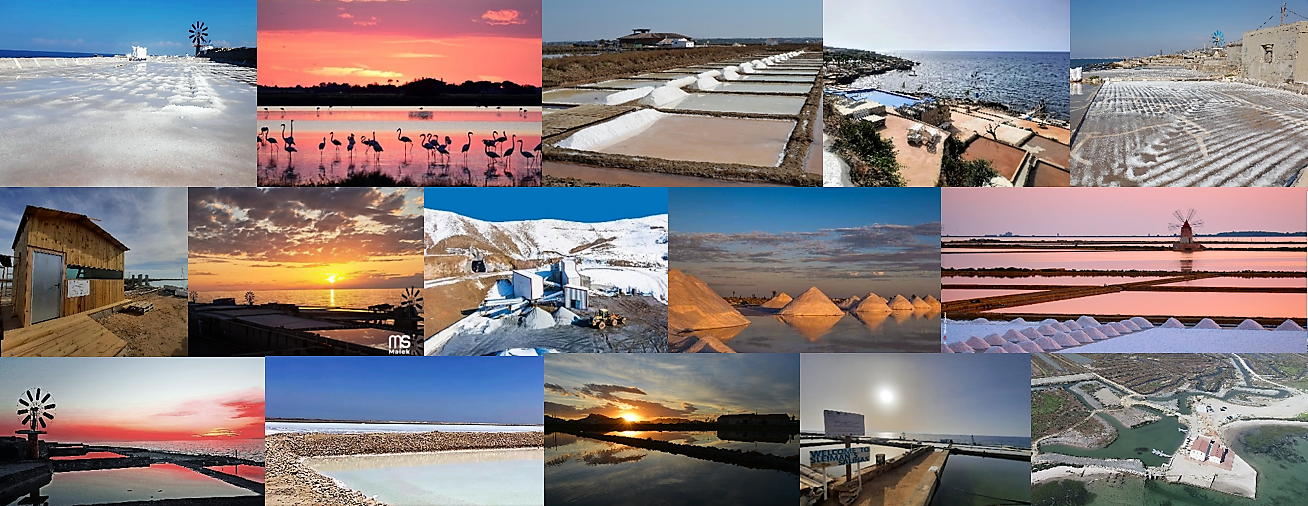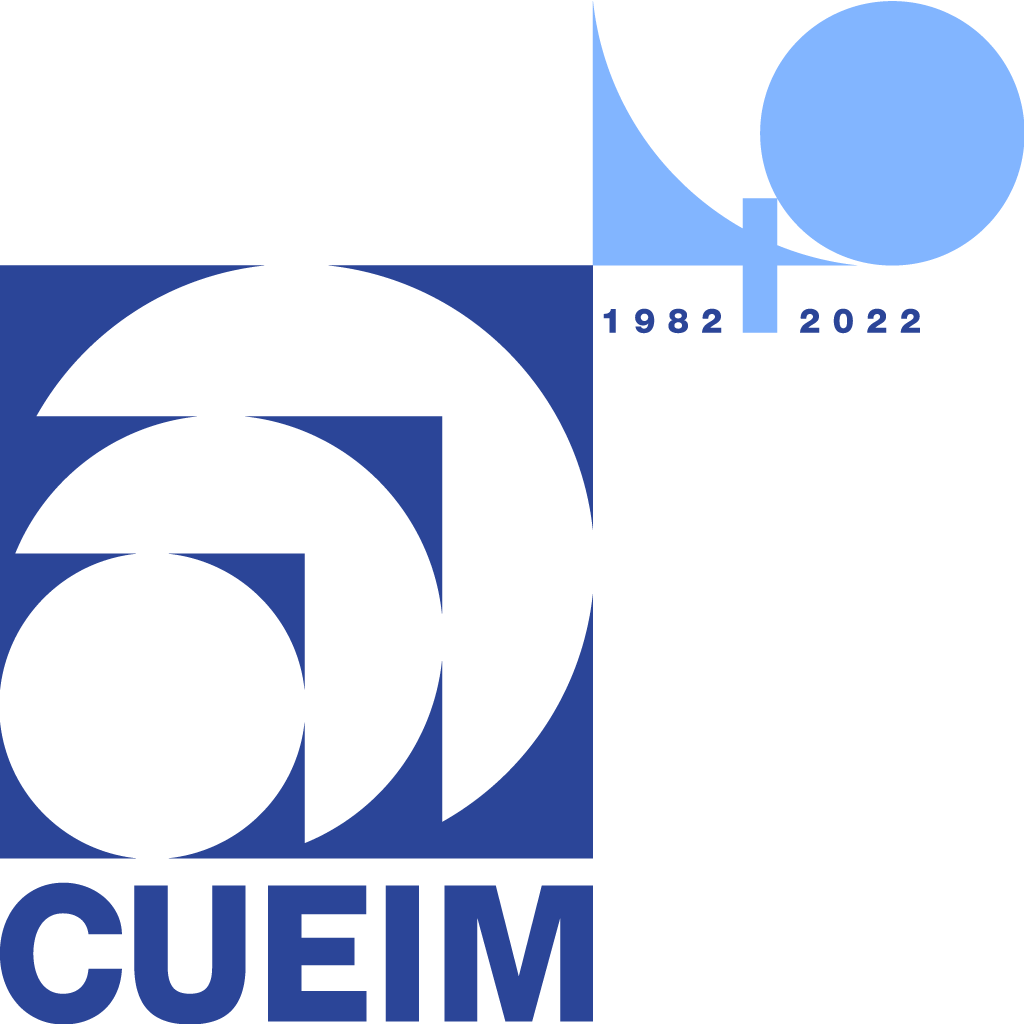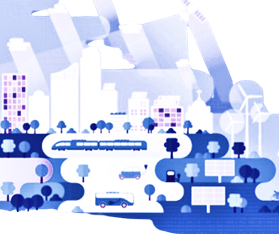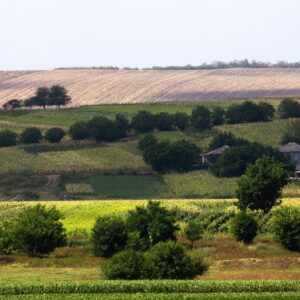
Managing a natural and productive site is a complex task which requires understanding rich and nuanced interactions. In many cases, management strategies tend to focus on one specific aspect or outcome, while directly excluding other valid options. For example, if we speak of the management of a salina, the need to generate revenue may be prioritized over arguments in favor of conserving nature or fostering social equity.
In practice, treating these aspects separately and as opposing forces remains a short-sighted approach which does not reflect reality. Economic, environmental and social well-being are inextricably linked and depend on one another. In this sense, a ‘sustainable development’ approach offers a broader and holistic vision, where “the needs of the present are met – without compromising the ability of future generations to meet their own needs[1]”.
The rich variety of values and services offered by artisanal salinas make them excellent laboratories to test and put into practice the vision of sustainable development. For this purpose, the MedArtSal partnership has defined a sustainable salina as “one that uses natural resources to obtain economic benefits in a socially and environmentally respectful way, thereby ensuring the future use of these resources”.
Building on this definition, the project has created its own sustainable development model, which outlines the key aspects for managing a salina sustainably and helps identify sustainability gaps. Through a matrix of sustainable action, salt- owners or managers can spot the best practices to be applied in each case.
Indeed, the MedArtSal model is as a multispectral model that considers economic, social, cultural, management and governance variables, while taking into account both quantitative and qualitative aspects.
 (c) MedArtSal – The MedArtSal model
(c) MedArtSal – The MedArtSal model
A brief review of the pilot actions, developed thanks to the 15 sub-grants is enough to observe the success of the holistic model of MedArtSal, where the sum of the interventions has laid the groundwork for a local approach to sustainability.
 (c) MedArtSal – The Economic Sustainability in the MedArtSal Model
(c) MedArtSal – The Economic Sustainability in the MedArtSal Model
Pillar 1 – Economic sustainability
One of the primary challenges faced by artisanal salinas is being economically viable. All over the Mediterranean, the lack of profits has led to their gradual disappearance, deterioration of facilities and loss of biodiversity, particularly since the 1950’s.
According to the MedArtSal model, for a salina to be economically sustainable, management measures should focus on:
- Improving productivity.
In many salinas, the amount of salt produced is not high enough to generate sufficient income to sustain the activity. As part of the MedArtSal pilot actions, different strategies have been pursued to improve productivity, as for example enlarging salt ponds, restoring facilities and damaged areas. In Italy, the recovery of tanks, canals and traditional embankments of SEI – Saline Ettore e a Infersa has led to an estimated increase in production between 10% and 15%.
In the Sabkhet Lâadhibet salinas in Tunisia (Ben Gardane province), the quality of salt has been improved thanks to the modernization of the evaporation basins. At the same time, diversifying productive activities has proven to be a key element to increase economic productivity.
- Optimizing sales strategies.
Marketing and positioning salt products are part of a process that requires a certain level of expertise, but also finding the most suitable strategy at the right moment. Since the war in Ukraine started, the managers of Salinas de Chiclana in Spain saw a 50% rise in the price of packaging. These changes posed a direct threat to their business viability. Throughout the project, the exchange with other salinas has contributed to find other alternatives.
In Lebanon, the project has played a crucial role in developing a consistent brand for four salinas, namely Al-Najja r Salinas (Blanc Sel), Georges Sleiman Salinas (Evaura), Malek Salinas (Sea Jewels) and Salacia Beach Resort. This branding initiative involved packaging, labeling and creating a visual identity for the salt products.
Thanks to this, owners and managers are now better able to present their products, enhancing their visibility, being aware of their unique selling proposition and increasing their market share. Furthermore, the salt products from all these salinas will be marketed through the MedArtSal online platform via https://medartsal.com/
- Fostering social equity.
In the governorate of Gabès (Tunisia), the restoration of the Jebel Hadifa salina will also provide significant benefits to the local population. By constructing and improving the paths of the salina, the project prevents salty water from the rain invading and contaminating the surrounding agricultural fields managed by local farmers. In the area, poor water quality and excessive salinity lead to a lack of agricultural products. At the same time, these works will facilitate the movements of the population living nearby. Overall, this pilot action expects to create 40 new jobs.
In another region of Tunisia – the Kerkennah islands – the project of the salina has involved young graduates from the Sfax region in aquaculture and awareness raising activities.
- Embracing innovation.
The use and cultivation of microalgae which grow in some artisanal salinas stands as one of the most innovative solutions developed during the MedArtSal project. In Spain, two salinas have explored the potential and viability of cultivating algae for food, cosmetic and well-being purposes. In the salina Roqueta y Preciosa, the production of the algae Spirulina with raceways has proven to be successful. In the case of Salinas de Chiclana, the managers have developed a line of cosmetics based on microalgae and other raw products from the salina.
Pillar 2 – Environmental sustainability
For decades, the abandonment of artisanal production has led to the decline of salt ponds, which often host important areas for bird nesting, but also provide a variety of ecosystem services that range from food production to carbon sequestration or water purification, among others. The recovery of these sites through MedArtSal is contributing to restore the environmental balance of these ecosystems, besides growing awareness on their unique value and multifunctional character.
 (c) MedArtSal – The Environmental Sustainability in the MedArtSal model
(c) MedArtSal – The Environmental Sustainability in the MedArtSal model
The MedArtSal model considers the following areas in order to enhance the environmental sustainability of salinas:
- Maintaining ecosystem services.
“By containing an extraordinary amount of water, the salina has managed to save the city of Cervia” – these were the words of Massimo Medri, Major of Cervia after the devastating floods that occurred in the North of Italy in May 2023. This is a clear example of the valuable and highly profitable services that the ecosystem of a salina can provide to its local populations. In this case, the investments have contributed to reduce the disaster risk.
- Maintaining or improving biodiversity.
Several of the pilot actions in MedArtSal are already having a positive impact on biodiversity, particularly for birds. The restoration project in Salinas de Marchamalo (Spain) is also improving nesting and resting habitats for seabirds in a heavily urbanized area of Murcia. Likewise, the project in Parco della Salina di Cervia (Italy) has restored eight nests and created another 3 under the supervision of the national competent authority.
- Managing waste and pollution.
The primary goal of the project in Salina San Vicente (Spain) has been to produce sea salt of the highest quality (virgin and fleur de sel), by reducing plastic waste from the waters in the pre-breeding stages. To do so, the project has tested the reduction of contamination by plastics and microplastics through the installation of a waste expulsion system.
- Saving energy.
Energy supply is currently a major concern for countries like Lebanon, where power shortages are a constant issue. Running a salina requires a significant amount of power supply, especially to keep the water pumping system active. Aiming to become as energy sufficient as possible, the project of Sleiman Salinas has managed to fully sustain water pumping on wind energy thanks to the installation of a wind will.
Pillar 3 – Fostering governance
Although governance structures greatly differ from one country to another, governance fragmentation is a common challenge for the effective management of artisanal salinas, regardless of the country where they are based.

(c) MedArtSal – The Governance in the MedArtSal model
For this reason, the MedArtSal model recommends:
- Analysing administrative situations to find the most suitable solutions in each case.
In Lebanon, a significant part of the territory where salinas are located belong to the Church. In Spain, restoring the Salinas of Marchamalo has made it necessary to request authorizations from different levels within the administration (from national to local). All these situations pose key challenges to the viability and long-term sustainability of the projects.
- Identifying best practices.
Although influencing laws and regulations is a challenging process, especially as external actors, certain activities can help to produce some of the needed changes. This is the case of tourism activities, labelled differently by each MedArtSal pilot site, whether as “salt-tourism”, “ecotourism” or “heritage tourism”. In the Bahia de Cádiz NP in Spain, the ecotourism itinerary developed by MedArtSal (in partnership with the MEET Network) has created a local cluster to directly involve the key stakeholders in the area. In the same line, but with a focus on the main goal of promoting and preserving the heritage of Italian salt, a heterogenous SMEs cluster among salinas and related organizations based in different country regions has been developed in Italy.
- Advising policy-makers.
Innovative projects such as the ones subgranted by MedArtSal are an excellent way of attracting attention from policy and decision-makers. indeed, the closing event of MedArtSal in Beirut witnessed the inclusion of the Salinas of Ras Al Malalih in Anfeh on the national map of cultural, heritage and ecological tourism.
- Focusing on cultural aspects.
Many artisanal salinas have the potential of becoming World Heritage sites in the category of “cultural landscapes”. In each case, understanding, promoting and justifying the “universal outstanding value” of these sites is a task that depends on the initiative of the local and national administration, with the support of civil society organizations and local entrepreneurs.

(c) MedArtSal – The MedArtSal sustainable model
The MedArtSal model aims to foster local economic development of salinas based on the sustainable production of salt alongside with the development of new products/services, by preserving its environmental and cultural values. Furthermore, this model is supported by a Salinas Sustainability Index (SSI) allowing to assess the level of sustainability of each of these sites.
The Salinas Sustainability Index (SSI)
Finally, the MedArtSal model allowed to get a comprehensive assessment of artisanal salinas in the Mediterranean region to enhance their sustainability. In this sense, a strategic research was conducted by the project partner UCA through the development of an index, the Salinas Sustainability Index (SSI), evaluating 22 key variables encompassing socio-economic, environmental, and diversification aspects of Salinas. Based on an online survey carried out in different steps during the project to gather critical insights from salt owners who actively engaged in the MedArtSal project, the research focused on assessing key sustainability aspects, like annual salt productivity, eco-tourism activities, product marketing strategies, and environmental conservation measures among others, serving as a practical tool for salt owners and managers to evaluate the sustainability of a Salina in terms of economy, environment, and innovation.
At the end of the project, the research results are showing significant progress in the efforts of the coastal salt producers to adopt sustainable practices, assessing the valuable achievements in their efforts towards a greater sustainability in their salt production. These results confirm the positive impact of the MedArtSal model, since all the interviewed salinas have showed positive steps towards becoming more sustainable, as well as the crucial role of the Salinas Sustainability Index in guiding their efforts.
For that reason, the MedArtSal model and tools will continue to provide social, economical and environmental benefits in the context of the involved salinas and beyond, showing the relevance of their joint efforts towards sustainability in contributing to a brighter future for the Mediterranean coastal ecosystems.
Article written by the MedArtSal project partner MEDSEA with the support of IUCN and CUEIM.
Find more about MedArtSal, a project funded by the ENI CBC MED Programme, on our dedicated page and on the official website.
[1] United Nations Brundtland Commission (1987) http://www.un-documents.net/our-common-future.pdf

 EN
EN 


